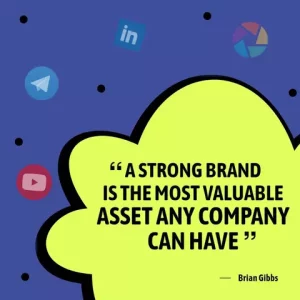How Often Should You do a Website Redesign?
You recently created a website, or perhaps you already had one. It took a lot of time, cost more than you planned, and might have even been stressful to let someone else build it when you’re used to doing everything in your business on your own. So, the last thing you want to think about is having to do this again. Perhaps you were delighted with the results, or maybe not. Maybe you just wanted to cross “create a website” off your to-do list; it wasn’t important to you how it looked or worked. But, if you’re anything like most people, you’ll probably be doing this all over again soon after.
Redesigning your website is one of the most exhilarating and terrifying things you can do. It’s a chance to update your brand’s aesthetic and deliver visually appealing content for your users (i.e., prospective consumers). Some companies update their website a few times a year, believing they still need to discover the perfect look. (This isn’t the best approach.) Other companies neglect to update their websites for too long. What are the benefits of redesigning your website, and how frequently should you do so?
A whopping 48% of people believe a website’s design is the number one factor in determining the credibility of a business.
How Often Should You Redesign Your Website?
There is no one-size-fits-all approach when it comes to redesigning your website. But generally speaking, you should perform a website redesign every two to three years. This is because if your site is three years old, it is considered outdated in the digital world.
 Like the shag carpeting of the 70s, what looked appealing three years ago probably isn’t now.
Like the shag carpeting of the 70s, what looked appealing three years ago probably isn’t now.
That hardly scratches the surface of the functionality, which will unquestionably become outdated after three years of no updates. Do you remember when websites’ mobile versions used a separate URL? As Loretta Lynn sang, “We’ve come a long way, baby!”
Current Design Trends Affect Visitor Perception
Think about how you dressed (way) back in the 1990s. Find a picture of yourself wearing anything you thought was “cool” back then. Go ahead; I’ll wait. Oh, you burned all those pictures, I see. How disappointing.
If you see someone walking around in bell bottoms and a silk shirt, they might need to be in touch with current fashion trends. Similarly, you can assume the company behind a website has lost its way if it has a hit counter, tons of drop shadows, and a tiled background. You might even believe they are no longer in business. Plus, with a site like that, it won’t be too long before they are forced to shut their doors.
Even things that seem minor can be major.
Although the transition from one design trend to another isn’t usually as dramatic as the shift from bell bottoms to skinny jeans or GeoCities to Squarespace, we can still recognize when something isn’t quite in style. Even relatively trivial elements like font selection, white space, or the width of your page’s content can give your website a dated appearance.
From a design perspective, what can you do to extend the life of your website?
Don’t get caught up in the “extreme” of design trends. As I write this, single-scroll sites and very long home pages are favored. But unless this serves your purpose better than any other option, don’t do it just because it seems like it’s “in.” Prioritize usability, functionality, and purpose first. Also, keep in mind that simplicity is usually preferable when going for timeless design.
According to Business 2 Community, the average lifespan for a website is 1.5 to 2.5 years. – Hubspot
Support Your Identity with Branding Standards
 Your branding determines your business’s logo, typefaces, colors, and visuals. It is an excellent idea to redesign your website or at least update the design if your brand standards change dramatically. Occasionally, this might even go the other way, with a new website leading you to review your branding guidelines.
Your branding determines your business’s logo, typefaces, colors, and visuals. It is an excellent idea to redesign your website or at least update the design if your brand standards change dramatically. Occasionally, this might even go the other way, with a new website leading you to review your branding guidelines.
What can you do to keep your website up to brand standards for a longer period of time?
Create brand guidelines for your digital marketing if you don’t already have them. Rather than following trends, it would be best to value functionality, timelessness, and simplicity. Stick to your brand guidelines above everything else!
Keep Current with Website Technology
Does your website adhere to the most current Web standards? It’s time to rebuild your website if it was built with an outdated HTML, CSS, or JavaScript version. Modern versions are easier to use, load more quickly, feature-rich, accessible, and secure.
You can take things a step further by incorporating contemporary design elements into your website utilizing a web design framework, a collection of organized HTML, CSS, and JavaScript, or a framework. Typically, frameworks offer a grid system and a simple way to include features like buttons, forms, and even photo galleries.
Some once-common Web technologies are no longer being used. For example, Adobe Flash was once a popular multimedia platform. But because of many problems and security dangers, using it isn’t suggested; the iPad and most mobile devices do not support Flash. It’s time to update your website using HTML5 if it relies on Flash to provide the same capabilities.
Finally, if your site is not encrypted using HTTPS, you should update it to do so to safeguard users’ sensitive information.
How Do You Know If You Need a Website Redesign?
A website makeover project requires a significant time and financial commitment. You can make a lot of design modifications and upgrades to WordPress websites without having to redesign the whole thing.
When deciding whether to revamp your website, there are several things to take into account:
1. What role does the website play in your business?
Consider the function that your website serves for your company. Your website can still be a key driver of customer acquisition, even if most of your revenue comes through referrals. Even if they were referred to a firm, most customers these days will visit their website before getting in touch. Many companies that previously relied on referrals and word-of-mouth may experience a dramatic decline in new business due to an outdated website.
Analyze the sales and conversions that are coming from your website. It might be time to redesign the site if you notice a decline in traffic, a high bounce rate, or diminished conversions.
2. Is your site design embarrassingly outdated?
Your website represents your company to past and present customers, potential partners, and employees. These days, customers often judge a company based on its website. If your website is significantly outdated, visitors may assume that your company is no longer in business, not reputable, or unreliable. It’s time to update the site design and content if the existing version does not accurately reflect your company.
3. Is managing your content and the site difficult?
Websites were once created using HTML and custom coding. Unless you are a coder, these sites are exceedingly challenging to maintain and modify. Most contemporary websites are created using a content management system like WordPress. Because non-developers are significantly easier to run because of how simple it is for them to edit the content and add new posts to these sites. Many companies start with website builders like Squarespace, Wix, or GoDaddy.
Although those platforms make an excellent initial starting point for a new company, you’ll eventually discover many restrictions on developing the functionality and aesthetic. If you built your current website with one of these tools, consider moving it to a content management system like WordPress. Ultimately, it will be much easier to use, but you’ll typically need to redesign the entire site when you switch platforms.
What types of website updates should I be doing?
Updates to a website don’t have to be difficult, but they are essential to its success. Not only do website updates work well with search engines, but they also give your visitors a reason to return for more.
You can update your website by doing something as simple as adding a new WordPress blog system, writing regular blog posts, or changing your website’s content to reflect any changes or updates pertinent to your company. Writing fresh content about your products, services, or news implies to search engines (and your clients) that you are an authority in your industry with a wealth of pertinent knowledge to give.
Because they don’t know what types of content they should write about, many businesses find it challenging to write for their websites. Once more, look at things from your clients’ points of view.
Consider the questions they might have about your products or services. Each of these questions is a possible topic for a piece of content. Additionally, there might be a chance to improve the existing content on your site. Look at the content currently on your site to see if there is a chance to add to what has already been posted. There may be a new service or product that your business offers. Why not post an article about it on your website?
Finally, you must notify search engines whenever your website is updated. This alerts search engines like Google that new content is available for crawling and indexing. You can accomplish this by updating your website’s XML sitemap and registering it with the relevant search engines.
For websites with a built-in CMS system, like WordPress, third-party plugins can occasionally generate XML sitemaps. An XML sitemap will need to be manually updated for websites without a CMS system. On xml-sitemaps.com, a fresh XML sitemap is available for free download. You can visit Google Console or other search engine websites to inform them that a new XML sitemap is available for crawling after downloading and posting to your website.
How Long Does a Website Redesign Take?
Several things may impact a website redesign project’s timeline. If you invest in a custom website design, you can generally anticipate the project to take 3–4 months to finish.
The following things can extend a project’s timeline:
- Project scope revisions
- Additional custom design work (extra custom page designs, illustrations, etc.)
- Receiving final content delays
- Advanced development (e-commerce, membership, forums, etc.)
- Clients frequently struggle with writing and producing content for the new website, which often causes project delays. Working with a consultant who devotes more time to the project’s strategy and content mapping phases is advantageous since it gives you, the customer, more direction on the type of content required for the new website.
How much does a website redesign cost?
Like many things, the answer to this question is, “It depends.” Several factors can affect how much it costs to update a website. Using a car as an example, each model has its own parts and engine and comes in different sizes and styles. Website upgrades can use the same principle. It will cost more to upgrade some websites than others. As your digital marketing consultant, I will carefully examine your current site, listen as you describe your business objectives, and collaborate with you to develop a plan of action before estimating the price of a website update.
 For search engine optimization updates, I often suggest something I call an “initial SEO push.” This push is akin to changing the oil in your car. It ensures your site has the core components required for search engine rankings. SEO is a continuing process, just like oil changes. A successful SEO strategy includes regular upgrades and modifications to stay relevant to the search engines constantly changing algorithms.
For search engine optimization updates, I often suggest something I call an “initial SEO push.” This push is akin to changing the oil in your car. It ensures your site has the core components required for search engine rankings. SEO is a continuing process, just like oil changes. A successful SEO strategy includes regular upgrades and modifications to stay relevant to the search engines constantly changing algorithms.
I often advise a monthly maintenance strategy after the initial SEO push. Depending on the plan, this might include monthly upgrades like keyword optimization, site speed optimization, on-page SEO, off-page SEO, and blog writing. All my monthly maintenance plans have quarterly performance reports that you can use to monitor your results and return on investment. The size of your website, the amount of work required, and the goal you have in mind will all affect the pricing structure.
Figure out the price of a website redesign.
Let’s wrap things up.
As technology and user expectations change, keeping your website up-to-date is important. A website redesign is a great opportunity to experiment with new designs and features that will improve the user experience. But remember to keep your users in mind when making changes to your website. A good user experience is essential to keeping your website relevant and fresh.

